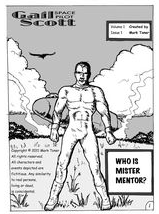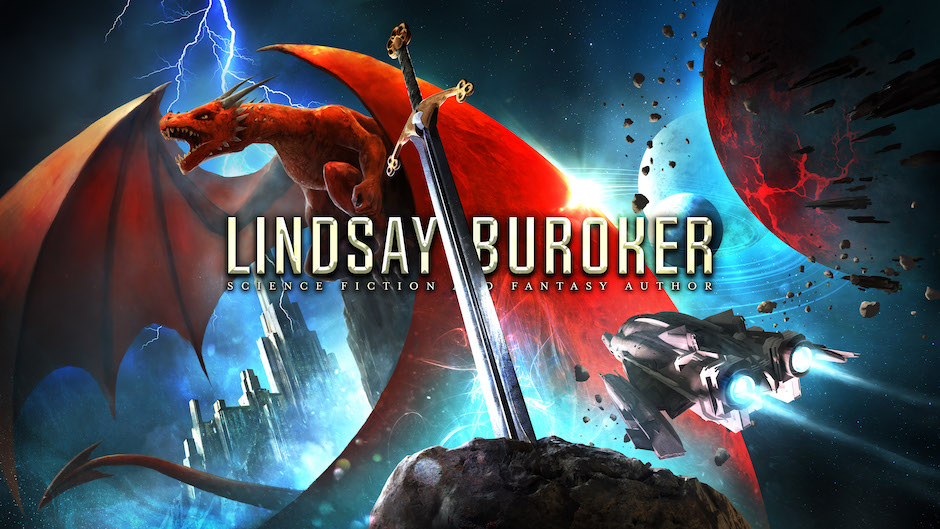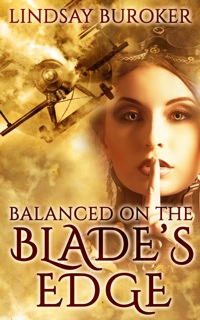 While you may have purchased your e-reader so you can digitally devour your favorite books, you needn’t be limited to straight text offerings. You can subscribe to blogs and even read comic books, and some folks are taking advantage of that.
While you may have purchased your e-reader so you can digitally devour your favorite books, you needn’t be limited to straight text offerings. You can subscribe to blogs and even read comic books, and some folks are taking advantage of that.
Mark Toner is the author/illustrator of Gail Scott: Space Pilot. For those thinking of uploading comics, or even children’s picture books, you’ll want to read this interview with Mark.
Why don’t you start out telling us about your road? What made you decide to publish comics for ebook readers?
Well – it all goes back to my strange childhood in 1960s west of Scotland. Due to the US submarines stationed in my part of the world and the US Navy’s use of unsold comic books as ballast, I had the opportunity to read all kinds of stimulating comic stories and soon began to write and draw my own. This became a compulsion and I was always to be found drawing whenever there was a spare moment. In my teens I drew the school comic and, instead of studying hard for my PhD at the Royal Observatory Edinburgh, I drew a regular comic for the ROE Bulletin. You can still read those 80s “Humphrey” comics on my web site www.spacepilot.co.uk.
After a spate of teaching to supplement the family income while our children grew up, I found myself with access to the web and a head still full of comics. So I decided to join the electronic self-publishing movement and get my webcomics out there. They seemed to attract a lot of interest and some nice comments. Then I discovered the Amazon Kindle Store and realised that you can actually sell your electronic publications rather than just post them for free. So I decided to collect the webcomic pages together into proper comic books and get them out into the Kindle Store. The latest, “Gail Scott: As Mars Turns” has just gone live on the Store.
What are some of the challenges you’ve faced? I’m sure formatting isn’t easy with all those images!
Formatting is a problem. A lot of people are just scanning print comics and uploading them to the store. However these are only readable on a Kindle application on a large screen device. They are illegible on a Kindle eReader or a smart phone. I was very impressed by the ideas of Canby Samson in his Kindle book “Kindle Comics: The Coming Digital Comics Revolution” which lays out just how graphics have to be sized and shaded to make them readable on a Kindle. So I started reformatting my comics so that they’d look good on small devices. In fact the latest was drawn from scratch as a Kindle comic and published in enlarged form as the webcomic. Once you know the dimensions of the screen, you can make the graphics the correct size and get the text big enough. Then it’s actually just a web page that you put the pages into and send to Amazon for Kindling.
It looks like you’re doing an ongoing series. How long do you make each ebook episode?
Yes, the Gail Scott stories are going to be an epic. I’ve just completed volume 1, although I have to redo issue 1 for the Kindle. It’s currently an illustrated book rather than a comic. The Kindle sized pages that I draw for the Gail Scott comics take a couple of days to make, with pencilling, inking, scanning and lettering, before formatting them for the webpage and the Kindle. Then there are nearly thirty of these per issue. So it takes a couple of months for each Kindle book and that doesn’t include the writing stage, which takes a few days in itself.
Do you have any thoughts on pricing when it comes to comics?
Print comics have become too expensive. DC are relaunching their entire comics line which is 52 separate titles at $3.99 each. So they’re hoping that comic fans will each spend $207.48 every month on their product! Now I know that the quality of the artwork and finishing is very high on a print comic these days but I think they’d sell a lot more if they reduced the paper quality a little and adopted a simpler, quicker to produce, style of art. Then the price per comic could come down and we could all read more of them. Alternatively they could go back to black and white ink and put them out on the Kindle Store. Due to the way Amazon stages the royalties, my books cost $2.80 there. Once they start moving in volume I may be able to reduce that.
What are your plans for the future? More in the same series? Something new?
There is going to be a little break between volumes of Gail Scott while I start a companion series called “Meanwhile Back On Earth.” This is going to cover the period when Gail and her crew are travelling out to the stars. Due to relativity, Gail’s ten year space mission will be more like 70 years back here on Earth and I’m going to make something like a newspaper strip (three or four panels in a row) to cover a series of adventures that happen here over that 70 year period. It’ll probably start with a Highland police adventure involving UFOs. Eventually both series will converge with the surviving characters from “Meanwhile Back On Earth” meeting Gail and her friends when they return to Earth for volume 3.
I’m also touting for business as an illustrator and have a number of projects that I’ve poked my nose into, some or none of which might result in something. An example is that I’m putting what I have learned with the Kindle comics into practice with a bespoke Kindle book cover service. Look out for a series of Kindle books entitled “Curious About…” issued by the New Curiosity Shop (www.newcurioshop.com) which will feature my cover illustrations.
* * *
Note from Lindsay: It looks like the Canby Samson ebook on formatting comics has since been taken down. Perhaps Niki Smith’s Formatting Comics for the Kindle and Nook: A Step-By-Step Guide to Images and Ebooks would also be a good starting point for folks.




I don’t envy you, sir, for having to format these comic books for the Kindle. It doesn’t help that the Kindle doesn’t support floating images. Congrats on working around the antiquated MOBI technology to give your readers a quality product.
I always wished I had more talent at art.
I don’t envy the formatting for that either. Straight text is challenging enough.
That sounds very time consuming! But totally awesome, too 🙂 I love how you figured out a way to make it work.
I reformatted all of my books for Kindle but I guess I lucked out in that I created a future noir series entirely in black and white so the art I think is successfully transferred to the Kindle. I used nothing but open source software for production and many people are surprised at the results.
I applaud anyone trying to create a market on the Kindle for comics – for the simple reason that the largest publishers in the country haven’t been able to truly grow the market for comics to something sustainable. I know some comics professionals – “made guys” to use a mafioso term – who work for the largest publishers and still struggle to make ends meet.
It’s only a matter of time – and in the digital world that could just be next year or next month – when someone somewhere will have that “oh yeah” epiphany and comics will find a new home, new audience and new life.
I love comics – always have, and will continue to publish on the kindle for the foreseeable future.
does it help if I have each page of my comic saved as a jpeg? im 200 pages into my comic and I would love to sell it over ereaders. I never even considered the complications of formatting. if anyone is interested in my comic Iwould be happy to email them what I have.